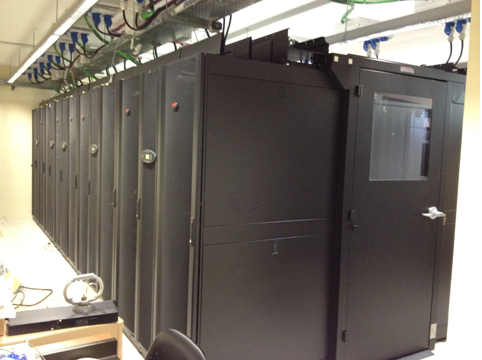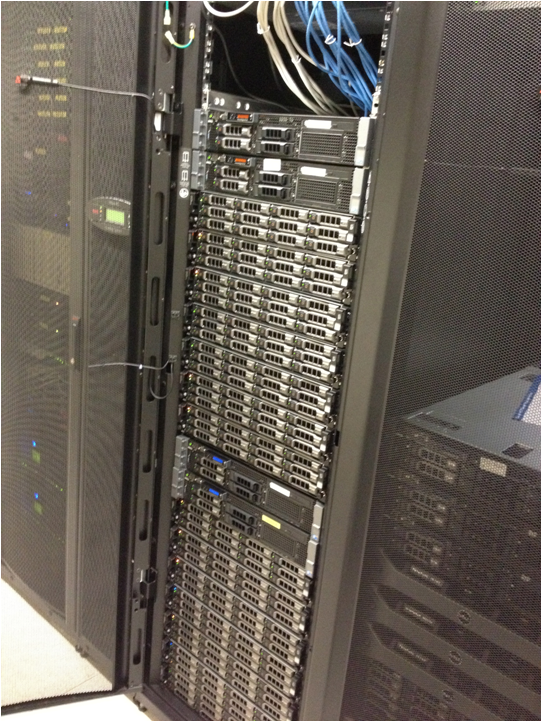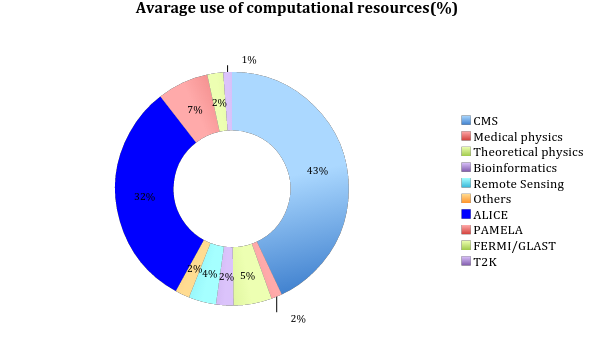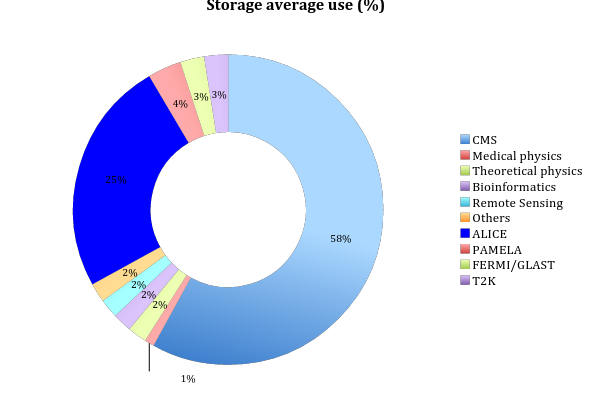 The Bari Computer Center forScience (Bc2S) was set-up in 2009 by the INFN in the Bari Physics Department to meet the growing computational needs of the experiments in which the "INFN Sezione di Bari" was involved, especially those of ALICE and CMS, the two experiments running at the Large Hadron Collider.
The Bari Computer Center forScience (Bc2S) was set-up in 2009 by the INFN in the Bari Physics Department to meet the growing computational needs of the experiments in which the "INFN Sezione di Bari" was involved, especially those of ALICE and CMS, the two experiments running at the Large Hadron Collider.
Here you find a summary of the most significant numbers of Bc2S:
- a computer room of 50 m2;
- 18 Racks and 10 water-air heat exchangers arranged in two opposite rows to form an island with an hot aisle;
- 2 chillers;
- an electric panel for the power supply and 3 UPS of 60 kW each (n plus one for redundancy) to maintain in operation the center in case of electric power black-outs;
- a fire detection and extinguishing systems;
- 250 computing nodes with more then 4000 total cores;
- 1700 TB's of disk shared between all compute nodes;
- a local area network, tree shaped, to ensure a bandwidth of 1 Gbps between each server and the storage.
- 3 compute nodes for interactive activities;
- 3 gateway to export resources to computing facilities distributed geographically;
- 2 HTTP and 2 XRootD servers to allow access to data stored into the farm from geographically distributed computers;
- 1 TB of dedicated storage (and a second for buckup) to store the software used by various scientific communities;
The Bc2S was exposing its resources according to the GRID paradigm, played the role of TIER2 (computer center of the second level) for the ALICE and CMS experiments, was connected to the European e-Infrastrucutre "European GRID Infrastructure" (EGI) and the worldwide "Worldwide LHC Computing grid '(WLCG).

In the fall of 2015, with the entering in operation of the ReCaS DataCenter, the Bc2S computational resources were merged with the ReCaS ones.
Basically Bc2S was devoted to experimental and theoretical activities of the INFN and of the Physics Department in Bari. But over the years, several users of other local scientific communities started to systematically use it.
This appears from plots 1 and 2 which respectively show the percentage of computational resources and storage equipment used on average by the various group of users in the last year of life of Bc2S. As shown, the experiments of high energy physics were using more than 80% of computing resources and about 90% of the storage. But the plots show also that medical physics, bioinformatics, analysis of satellite images (remote sensing), etc. were using a significant amount of the overall computational resources.

Figure 1. Percentage of the Bc2S computing resources used by the HEP experiments and other scientific communities.

Figure 2. Percentage of the l Bc2S storage resources used by the HEP experiments and other scientific communities.


